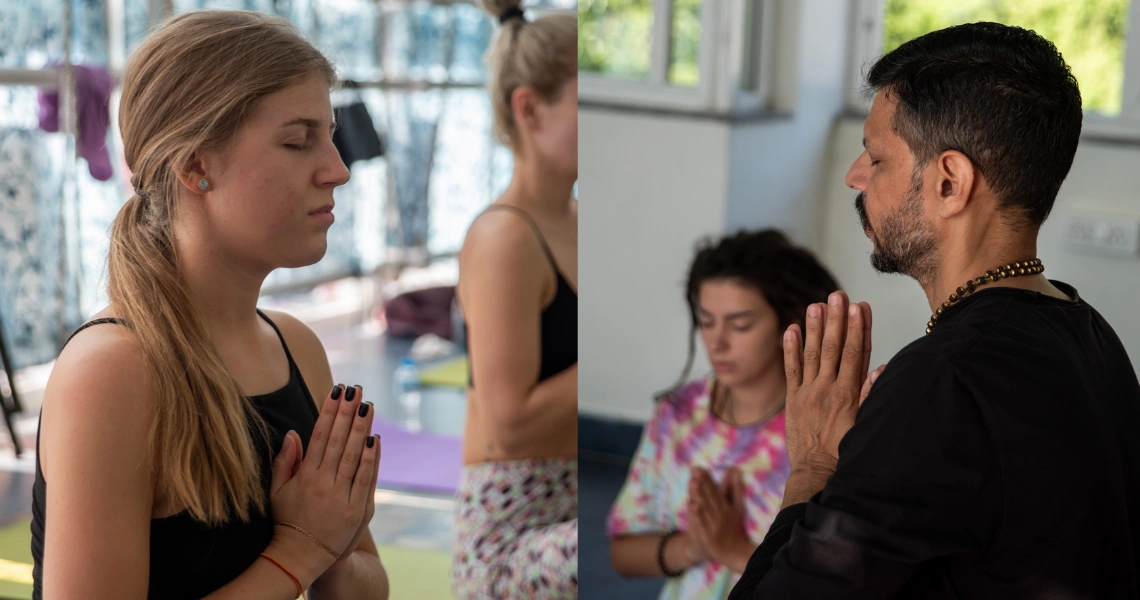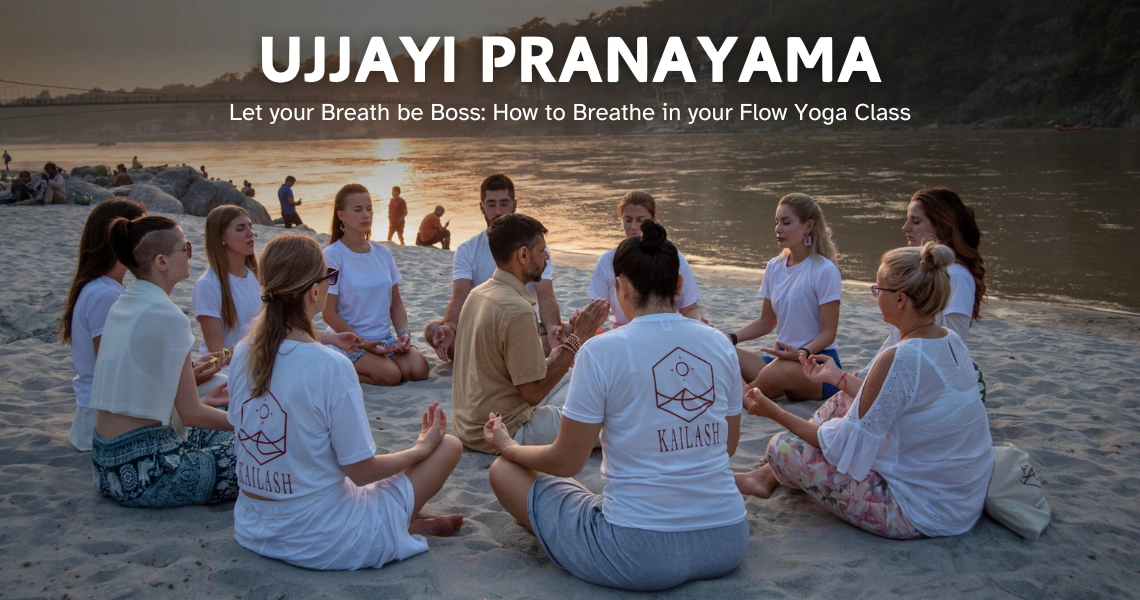Ujjayi Pranayama
UJJAYI PRANAYAMA
Let your Breath be Boss: How to Breathe in your Flow Yoga Class
It doesn’t take many yoga classes to realise that there’s a lot of talk about the breath. How to breathe, when to breathe and tips for coordinating your movements with your inhalations and exhalations. As a new student, this might seem overwhelming as you attempt to follow along to a sequence and keep your left and right in check, but there are plenty of great reasons yoga is a breath-based practice. This article will cover the basics of Ujayi breath (how we breathe in a flow class) and explain why it is essential for your practice.
Ujayi breath is a form of pranayama or breath control. Pranayama sounds fancy, but at its most basic level, it suggests that how we breathe significantly impacts how we feel. Becoming conscious of our breathing in a yoga class can help us set a steady pace, improve self-awareness, and manage our energy levels. Ujayi breath also has a powerful balancing effect on our entire cardio-respiratory system.
First, here’s a how-to guide for learning Ujayi. Try it out a few times, sitting still, before trying it in class. Remember, you are not expected to keep your Ujayi breath up the whole class. As you focus on other things, you’ll naturally forget, then remember and forget again. Like anything, it gets easier with practice.
How to practice Ujayi Pranayama?
- Seal your lips and breathe in and out of the nose.
- Take an inhalation slightly longer than usual and fill the belly.
- Take a gentle pause at the top of your inhale.
- Exhale slowly through your nose while gently constricting the back of your throat.
- Again, go for a gentle pause at the bottom of your exhale.
- If you’re unsure how to constrict the back of your throat, try it first with the mouth open. On your exhale, pretend you are fogging up a window. Keep that sensation as you breathe in and out of the nose with the mouth closed.
- No need to be super noisy; go for a gentle, raspy quality in your breath.

So, why is the way we breathe so fundamental to our yoga practice?
Ujayi holds our attention:
Ujayi breath is a great way to build focus and presence in your class. One of the primary goals of yoga is to calm the mind while energising the body, and the breath becomes a convenient anchor. Our mind loves distraction, so bringing your awareness back to the sound and sensation of the breath is a great way to flex your concentration muscles. Life is fast and furious, and we spend much time lost in thought, so think of your yoga practice as a window to get out of your head and into your body. Think of your class as a moving meditation. When you inevitably get distracted (over and over again!), you can count on your breath to be there waiting for you.
Ujayi increases our self-awareness:
If we are paying attention to our breath, we are paying attention to our body. Staying in tune with our body and listening to how it feels makes us more self-aware and less prone to over-exertion or injury. Next time you settle into a pose, notice if you can gather and focus your energy with your inhalations. As you get a chance, please pay attention to where you spend your energy. You may notice a tightness in your jaw or shoulders you could let go of. Learning to shift your attention inside yourself is one of the greatest lessons you can take away from a yoga practice. This ability to increase your sensitivity becomes a skill you can transfer to daily life to manage tension and stress in your body.
The breath sets the pace:
It’s easy to fall into a tendency to rush if you are new to the flow style of yoga. Each class might present a new sequence, and you might struggle to keep up. Maintaining a steady, even breath is like a metronome reminds us to slow down and set a tempo that suits us. Next time you’re practising, try to let the breath be the boss; allow your breath to set the timing of your movement rather than the other way around. It can help to count to four for each inhale and exhale slowly. Each of us has a unique tempo, so it doesn’t matter if you are not perfectly in time with those around you. Maintaining this steady pace will ensure the class feels more like a slow dance than a wrestling match, and you’ll feel energised rather than depleted come savasana (the excellent bit where you get to lay down at the end).
Your breath dials into the nervous system:
Usually, when we exercise, we stimulate our sympathetic nervous system (SNS). This is the active adrenalin-fuelled response that fires us up into ‘go mode.’ In contrast, when we practice yoga with Ujayi breath, we dial into our parasympathetic nervous system (PNS). The PNS conserves energy, lowers stress and lifts our mood. While a dynamic flow class can strengthen the body and provide physical challenge, connecting to our breath will prevent us from over-exertion and nourish our nervous system. Next time you feel challenged in a pose, dial into your Ujayi breath and see if you can remain calm and focused. If you can’t get control of the breath, it’s your body’s way of telling you to pull back.
Your breath is essential, but don’t overthink it – Ujayi breath is designed to calm the body and mind, a skill that will develop over time. Yoga should be fun, so don’t take it too seriously. Our Yoga Retreat programs feature classes where you can practice your Ujayi breath – let us know how you go!


